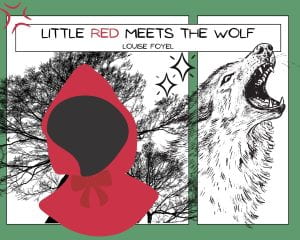Throughout my degree I was challenged to think about the future of school libraries and learning in the 21st century; where TLs cultivate a set of skills that go beyond what we traditionally teach (Wall & Bonanno, 2014). Rapidly developing technologies, and the skills required to be competent and capable educators need to be considered for both teachers and students, to navigate new pedagogical practices and learning capabilities (Wall & Bonanno, 2014). Early in my course, I identified that educators are constantly asked to change the boundaries of teaching and learning to ensure we are building learners for the future (Foyel, 2021, April 19).
The conversation about future-ready libraries has changed too and the role of school librarians in leading, teaching and supporting students’ learning (Ray, 2020). The Future Ready Librarians Framework has been developed to identify how librarians can support, teach, and lead learning in schools (All4Ed, 2022).

Although we cannot predict what jobs will exist for our students in the future (Dené-Poth, 2019), as educators we need to be lifelong learners and prepare our students for critical and creative thinking (Foyel, 2021, April 19). Dené-Poth’s (2019) research claimed that, preparing students for the future means pushing them beyond basic recall and engaging in deeper levels of thinking. As educators, we need to design learning experiences that enable our students to “become leaders, designers, problem solvers and innovators” (Dené-Poth, 2019, para. 18). Within the setting of the school library, a TL can make decisions about students’ learning experiences and environment to support collaborative and creative thinking (Foyel, 2023, March 7). The role of the TL in the changing information literacy environment is to ensure all students have access to information (Templeton, 2021).
The TL role is a complex one, where being an effective leader of change has many facets. ETL504, Teacher Librarian as Leader, provided many opportunities to reflect on the type of leader I wish to be. A TL is uniquely positioned for many leadership responsibilities; I have learnt that leading from the middle means a shared vision (Foyel, 2023, March 3), where I can positively influence others to achieve shared goals (Foyel, 2023, May 19). Leading from the middle is being visible and proactive in the school, to gain a following and be a champion for change (Gagen-Spriggs, 2023). By empowering learning through leadership, the TL can share knowledge and expertise, and build relationships by fostering an atmosphere of respect and rapport with both staff and students (American A.O.S.L, 2013).
Embracing change and being a lifelong learner has certainly been an important theme throughout my degree. Striving to remain current and in touch with trends in literature and advancements in technology. One such trend I struggled to connect with in the primary school setting was eBooks. Having trialled eBooks during COVID-19 stay-at-home learning, I found that the children still preferred to borrow a physical book from the library (Foyel, 2023, December 27). In the primary school setting both print and digital books should play a role in the classroom; though careful selection of digital texts is required to ensure its benefit to the learner and the integrity of the story is maintained (Yokota & Teale, 2014). Scaffolding a child’s reading development with digital texts can limit their comprehension skills, with distracting Refeatures of digital texts impeding comprehension (McGeehan, et al., 2018). As digital technology becomes commonplace in classrooms, educators seek criteria to select quality texts from trusted sources (McGeehan et al., 2018).
Determining what makes a quality digital text, with the abundance of choice, can be problematic (Foyel, 2022, August 21). The value of eBooks lies in what they can do, that print cannot. With new technology comes new challenges, where pages aren’t just turned, but swiped, pinched, tapped, and clicked and can vary between devices, formats, and suppliers (Sadokierski, 2013). ETL533, Literature in Digital Environments, presented many viewpoints about digital texts and digital storytelling. ETL533 challenged me to consider the vast formats of digital resources and create one that I could use (Foyel, 2022, September 30b). I worked collaboratively with the Year 5 teachers, to incorporate a digital text into library lessons that aligned with their writing unit on Folklore, Myths and Legends.
My resource presented the beginning of a digital graphic novel, based on the story of Little Red Riding Hood. The children had prior knowledge of a variety of versions of the story and were asked to complete the digital story using Canva. A trial group of Year 6 students used the resource and provided feedback; this led to improvements before I presented it to Year 5 students (Foyel, 2022, September 30a). This was a challenging and rewarding project, and my negative perspectives about digital texts began to change. I discovered that it was a resource that engaged the students and deepened their understanding of digital narratives (Foyel, 2022, September 30a).
I discovered digital graphic novels provide ways for students to interact with the text, and learn new content; TLs though, must have the skills and knowledge to establish themselves as technology leaders in the school (Morefield-Lang & Gavigan, 2012).
“It is vital that school libraries are future-ready and provide a collaborative space for learning and teaching, where policymakers, teachers and teacher-librarians work together to improve school libraries for the future (Loh, 2018)” (Foyel, 2023, ETL512, Assessment 5 – Professional Placement Portfolio).




